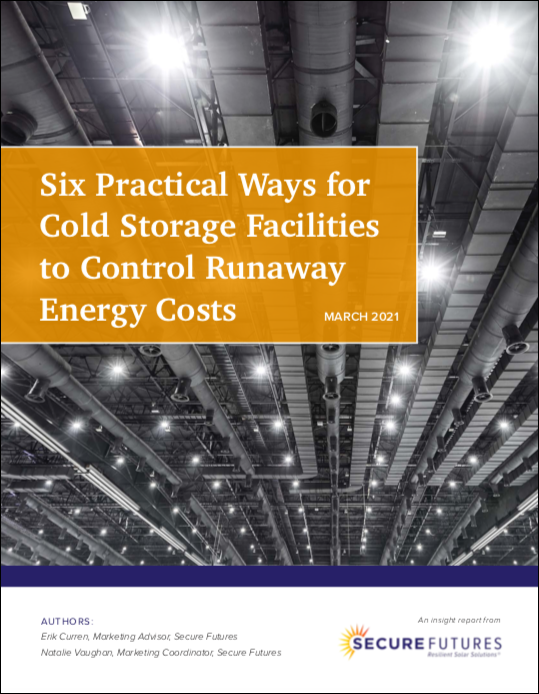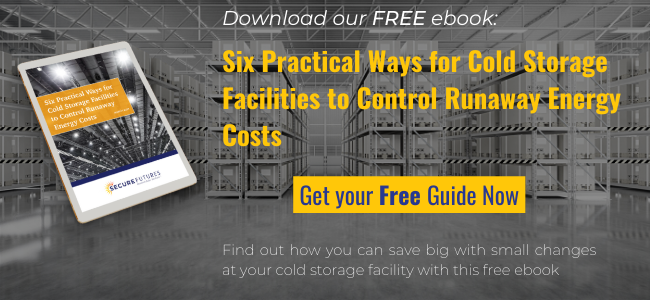Mar 31, 2021
Top 6 Ways that Cold Storage Warehouses Can Cut Energy Costs
When it comes to keeping rising costs down, we know that facility and financial managers of cold storage facilities are up against a big challenge. That is why we are excited to announce our new guide Six Practical Ways for Cold Storage Facilities to Control Runaway Energy Costs.
From changing light bulbs to painting your roof a lighter color, we compiled six easy ways to not only help you start saving on your energy bills, but also to enhance your role as an Earth-friendly link in the cold chain for food, beverages and pharmaceuticals.
Moving cold and frozen products quickly and efficiently from where they’re made to where they’re needed reduces potential shortages. This has become increasingly evident during the recent pandemic when suppliers may be constrained to meet customer demand. While the majority of praise has been rewarded to grocery store employees, the unsung heroes of this time are also the ones who store and refrigerate these goods at cold storage warehouses. Their efforts and key role in our infrastructure have not been talked about enough, and we would like to thank them now for keeping our economy going.
What is even less discussed though is the energy costs of keeping these refrigeration warehouses in operation. Second only to labor, energy accounts for the majority of operating costs for cold storage facilities. While energy costs typically account for 15% or more of the operating budget, refrigeration makes up about 70—80% of the average facility’s electricity bill. As utility costs rise, it becomes more challenging for operators of facilities to keep energy costs under control.
Additionally, the widespread power failure that struck the state of Texas in February 2021 underlined the vulnerability of the nation’s aging energy infrastructure. As the cost of batteries continues to come down, some facility operators are considering backup power solutions.
In our new guide we talk about the following small changes cold storage facilities can make to see savings:
- Changing lighting from typical light bulbs to LED and installing light sensors can cut lighting energy up to 75%
- Installing high-volume, low-speed (HVLS) ceiling fans up to 24-feet in diameter can reduce thermal layering and keep your cool air cool longer
- Reducing the number of doors or securing doors from air leakage will aid in keeping your temperatures stable
- Energy management systems like those provided by an Energy Services Company (ESCO) can help you manage peak demand charges on your electric bill
- Painting your roof a lighter color or even planting your rooftop surface to cultivate a “green roof” can help reduce the amount of heat that leaks through your roof and into your temperature sensitive facilities
And even though these are all smart moves to see savings and become more environmentally friendly, we know that there’s an even better solution that trumps them all: solar energy.
In 2019 our customer InterChange Group, a third-party logistics provider in Virginia, installed a whopping 1.6 megawatts of solar panels on the rooftops of four of their warehouse locations. For the facilities in the first phase of solar, their power usage in 2018 versus 2019 only increased by 0.035%, yet their annual electric bill went down by $136,000 – representing a decline of 32%. Does this sound too good to be true?
Although we are the biggest fans of solar energy and all the benefits it provides to us and our environment, our new guide draws on industry expertise to offer actionable ideas that cold storage facilities can implement right away to start saving money on energy even without solar panels.
To read more about how you can start saving at your cold storage warehouse, download your free copy of our energy guide for cold storage operators now.

